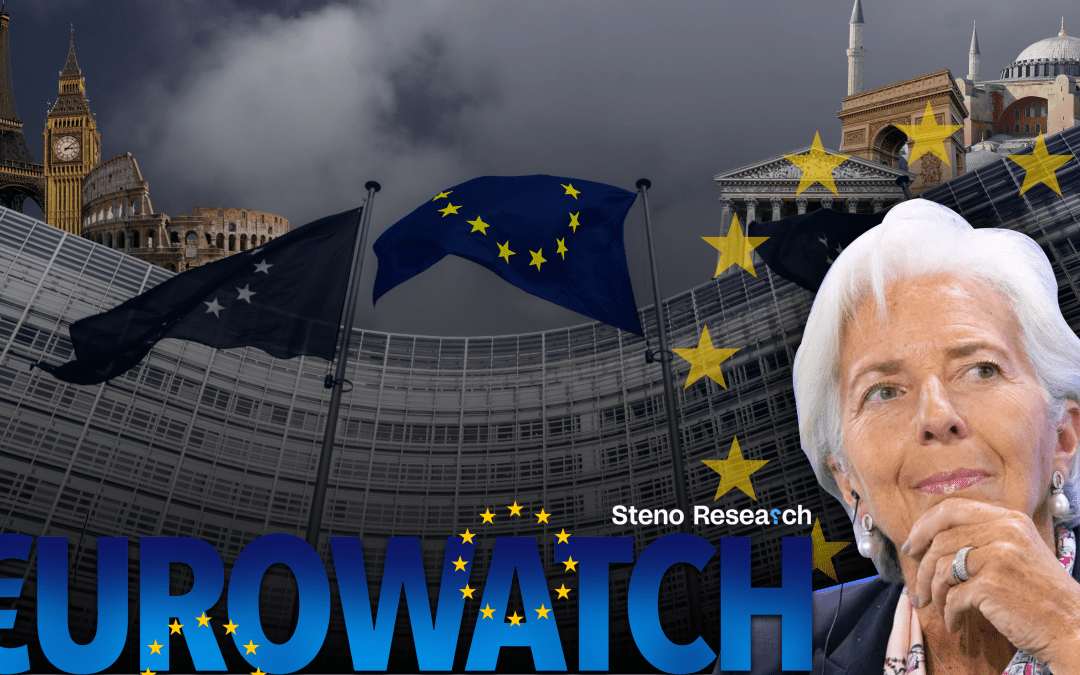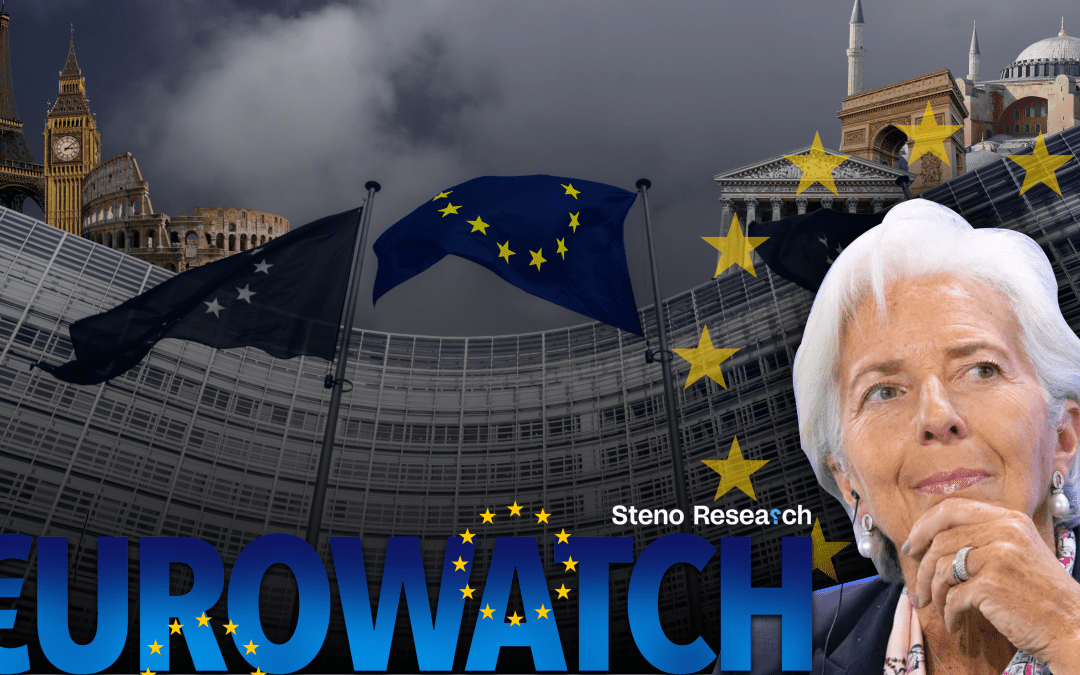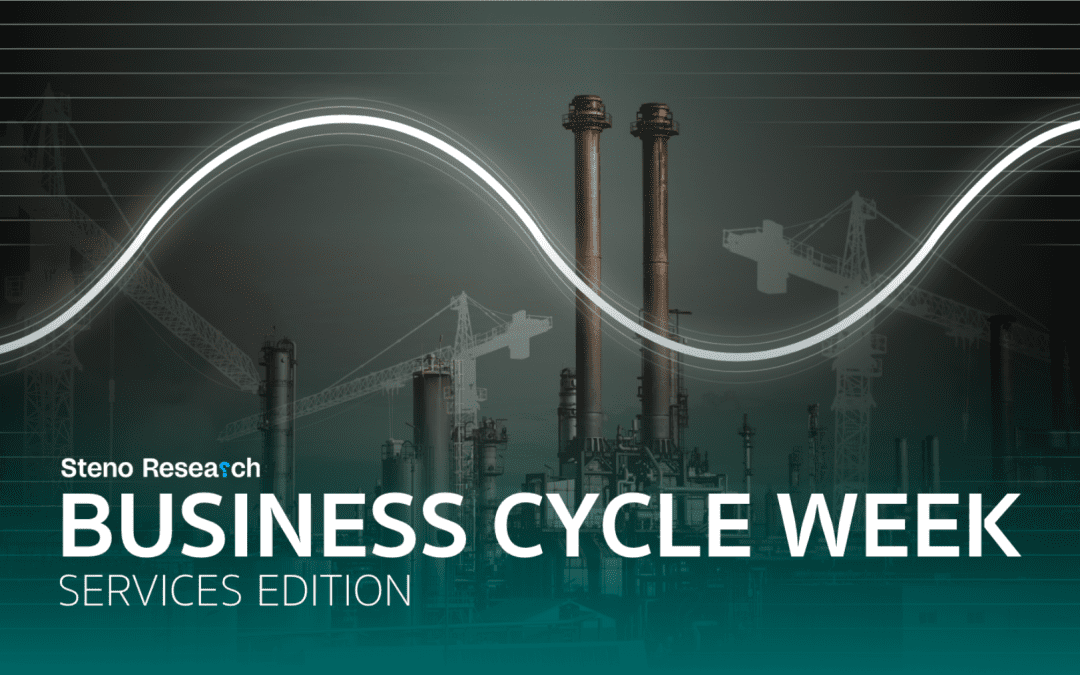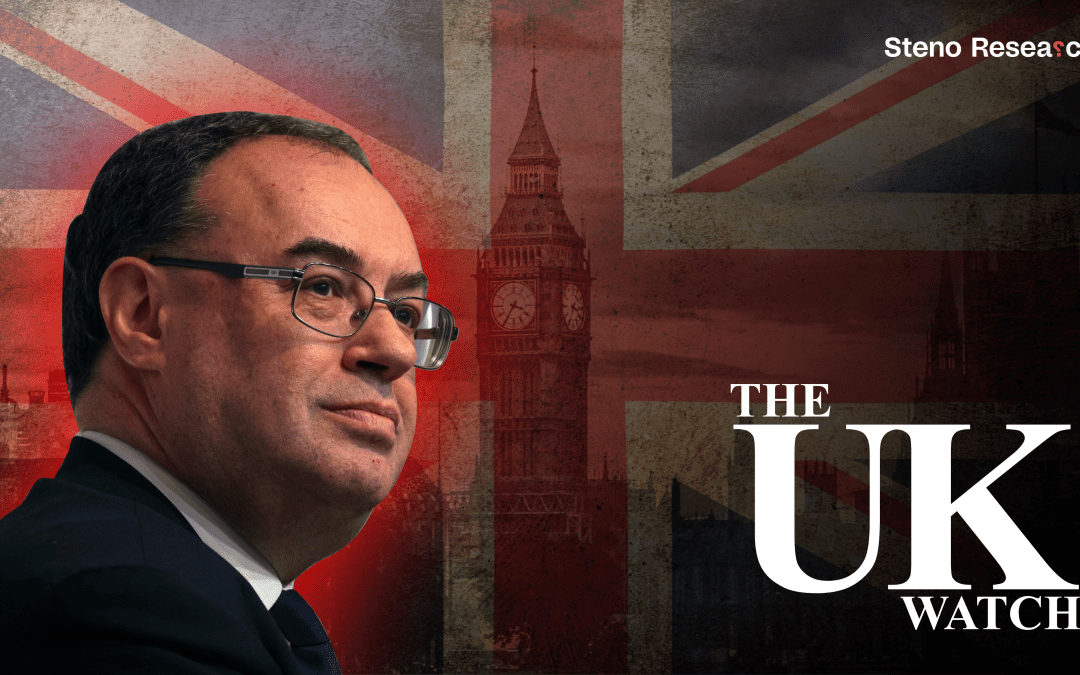Our expectations for the big central banks this week presented in a one chart + one-paragraph format!

The “Watch Series” is a collection of individual series such as Europolitics Watch, Inflation Watch, Real Estate watch and much more. Stay tuned for in-depth coverage of your favourite subjects.


Our expectations for the big central banks this week presented in a one chart + one-paragraph format!

Betting against Europe is becoming increasingly popular, but the energy trade is yet to become overcrowded. Here is the weekly positioning report.

Inflation in the word recession? Some have stubbornly called for a doomslike recession while others see the economy firing on all cylinders. Our data-based weigh in on the topic.

The short Europe bet is getting increasingly crowded but for good reasons, while the energy bet, impressively, is not overly crowded yet. That is comforting for EUR shorts as energy is a main driver of European versus US allocation.

We consider the ECB assumptions to be off and see a much “weaker” ECB commitment going forward compared to the Fed. Here is why the ECB is off in 4 charts!

Prices paid to US producers increased in August by the most in more than a year largely due to energy. Is relative US vs EU market pricing off? Here are the key takeaways!

We have noticed a trend of unionized labor proposing aggressive wage and working demands, thus we thought this would be a good time for a quick wage nugget.

Energy inflation is back on the board, and it will soon spread to PPI and the other components if current trends persist. We take you through the most important take-aways from the report.

We dive into the challenges ECB are (still) faced with, as headline inflation is likely to rebound from November and onwards, giving the ECB another – but bad – argument to keep policy restrictive. A hike seems like a done deal tomorrow, but what about the path for 2024?

With Brent crude trading above 90$ / barrel, markets beg the question if we are about to enter a new bull run in energy markets – indicators could very well point towards it. But watch out for the elephant in the room: Uranium.

The Inflation Reduction Act (IRA) intended to deliver both an expedited ‘green’ transition as well as a +$300 bn deficit reduction. But, what are the measurable effects circa a year later?

The Fed is likely to conclude that the cocktail of rising headline inflation and dropping core inflation is enough for a skip, but by refusing to act on emerging renewed price pressures, they will likely let the market do the dirty work!

The first signs of a weakening job market are here, but will there be more to come? And what are the implications for equity markets?

The banking crisis theme seems to be losing steam in the media. But is it really over yet? 4 charts on the trouble

All eyes are on the Eurozone CPI next week as the USD keeps wrecking through global markets. How are traders positioned as we enter the last month of Q3? Read our takeaways below

Hail King USD! This week has been all about the US exceeding expectations, while the opposite is happening in the Euro area and to a certain extent in China.

We are well under way in our Services Week with our focus on Services and in this note we wanted to highlight the issues central banks could face in a scenario in which manufacturing outpaces services.

With the recent move in Energy, discussions on a broad second wave of inflation have resurfaced. There are similarities to the first wave, but also one MAJOR difference. Here is why..

Global trade is shifting and the US economy is still going strong but the dynamics are changing as are the times. How will global macro likely change as a result?

We have run the numbers on historical correlations between the US PMI spread and various asset classes to find out what you should buy if manufacturing rebounds while services weaken.

The simplest of rules still holds in Real Estate space. The current lack of volume is a harbinger for the price development. The trigger could prove to be the weakness in Services.

There is a sudden smell of 2021/2022 in the air again as Muftis and Zars suddenly have the upper hand in energy markets again. Can Bin Salman make life difficult for the West in Q4?

While liquidity was on everyone’s lips 6 months ago, the net effects have been somewhat benign. Meanwhile, PMIs and inflation seem to be running the show. It appears that services are weakening coincidently with manufacturing showing strength. Board or aboard cyclicals then?

The Chinese stimulus measures presented last week could provide generalists with another reason to jump the Energy bull train. Does this mean that the energy optimism is close to peak?

The intricacies of the US labor market make it challenging to derive coherent insights. To shed some light on our perspective, here are three charts that aid in elucidating our view

When input costs subside for Manufacturers but not for Service companies, the overall economic momentum moves in favour of the Manufacturers. This is most likely the juncture we are at.

There are early signs of manufacturing rebounding in the US amidst weakness in labor markets, weak European growth and yet another Chinese credit event. Is the market prepared for a cyclical uptick in the US despite all of the turmoil? We take a look here.

Weak hiring including negative revisions, Services much weaker relative to trend, but Manufacturing is rebounding. Everything we planned for!

Everything in our US model portfolio screams that we need to continue to tilt the portfolio in a cyclical direction. The signal is just not confirmed across the Pond(s) in Europe and China.

The UK has received some attention throughout the current economic cycle as they try to combat weakening growth together with inflation way above BoE’s target. Is now the time to buy UK assets, or is it still a nogo? We’ve run the numbers.